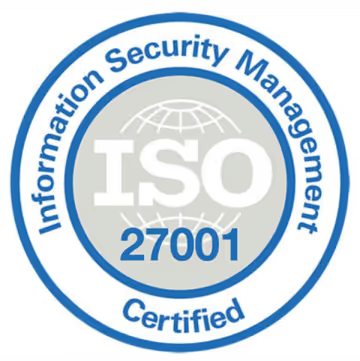As many of us have transitioned to remote work over the past year, one of the pressing questions in the workplace has become: how do we form a remote community now? It’s important as leaders to center authenticity when trying to build connection from afar in the virtual world. You can provide all of the opportunities for happy hour, game night, lunch socials, and even intangible benefits, but if they don’t appeal to your employees or demonstrate real care for their needs, they may not be beneficial. Let’s explore ways in which you can identify the needs of your employees and develop healthy remote work communities.
What Are The Common Challenges in Building a Remote Community?
Creating a strong, cohesive remote community comes with its unique set of challenges for remote work and mental health. Key obstacles often arise in the areas of:
- Interaction
- Support
- Team-building
For instance, effective interaction can be difficult to maintain when team members are spread across different time zones, which can disrupt the flow of communication and hinder collaborative efforts.
Additionally, fostering a sense of support within a virtual team can be challenging, as the absence of in-person connection may lead to feelings of isolation or loneliness. And without proactive team-building efforts, the lack of shared physical space often reduces the natural opportunities for bonding, impacting both engagement and morale. Overcoming these challenges is essential to ensure that every team member feels valued and connected within the remote community.

Why is it Important to Build a Community for Remote Work?
Building a sense of community in remote work environments taps into fundamental psychological needs, fostering a connected, resilient team. Humans are inherently social beings, and feeling part of a larger group—even in a virtual space—satisfies our need for belonging and acceptance. Therefore, a well-crafted work-from-home community helps boost morale by providing this sense of inclusion, which is essential for reducing isolation and enhancing overall job satisfaction.
From a psychological standpoint, creating these connections builds a sense of support that nurtures trust among team members, allowing them to feel safe, valued, and motivated to contribute openly.
This sense of integration enhances collaboration and encourages everyone to engage more fully. Additionally, the flexibility that remote work allows can also fulfill the need for autonomy, enabling employees to participate in ways that align with their personal strengths and preferences, leading to higher productivity and creativity.
In short, a strong community for remote work doesn’t just support daily tasks; it also:
- Satisfies core psychological needs
- Enriches the work experience
- Empowers the team to thrive collectively across any distance
How to Build an Inclusive Remote Work Community?

Creating a strong work-from-home community requires HR teams and managers to focus on meaningful practices that bring employees together, despite physical distances. Here are ten actionable tips to help build an inclusive remote community, especially for HR and team leaders looking to support connection and collaboration:
1. Identify Your Employee’s Needs

This first step can be quite simple. Ask your employees: what would make you feel more connected to your colleagues? Brainstorm ideas together or ask them to fill out a short survey so that everyone has a voice. Maybe you notice from their responses that they need more time to settle in before diving right into a meeting or maybe they’d prefer a scheduled social event that takes place weekly, even if it’s done remotely.
By focusing on employee feedback and carving out time to implement their requests, you demonstrate care and invite a more equitable work environment. When employees feel seen and heard, there’s more room for real authentic connection. Let’s explore some activities you can try together to build up that sense of community.
2. Start Meetings With a Guided Meditation

Let’s say your employees have expressed that jumping directly into the minutia of a meeting can be overwhelming. In order to demonstrate that you’ve heard their feedback, you can try starting each meeting with a guided meditation.
You don’t have to spend a long time with this, but rather can begin with a one-minute meditation and open up space for everyone to reset before getting to the agenda.
3. Daily or Weekly Check-ins

Sometimes we’re so caught up in our work schedules and responsibilities that we neglect to ask basic questions like how are you today? This can be such a powerful way for people to begin opening up to one another. It’s important to note that not everyone feels comfortable in the same way, so providing options for participation is key.
You could use a simple employee satisfaction scale: Ask everyone to respond on a scale of one to five, one being the best and five the worst, to indicate how they’re feeling. Then, those who’d like to share could have the time to do so. Or, maybe it’s a meme challenge where everyone has to submit a meme that corresponds to their emotional state that day or that week.
4. Mix it up: Breakout Sessions

Everyone isn’t always comfortable being vulnerable in whole group sessions. Breakout groups can create a less intimidating environment in which people can share. Topics of discussion could be anything from addressing conflicts at work to expressing your high, low, and new experience of the day or week.
Remember, these activities should be tailored to the needs of your employees. If you’re wanting to enliven the group, you could even try creating a competition of sorts through a scavenger hunt or a trivia game.
5. Celebrate Diversity and Inclusion Initiatives

Create space for employees to celebrate cultural, regional, or personal milestones. Recognize these events in team meetings and newsletters, which builds appreciation for diverse perspectives within the work-from-home community. You can also considering emplementing virtual mental health days, where you share tips to support their well-being, and a short reflective and positive space.
6. Organize "Ask Me Anything" Sessions with Leadership

Host regular AMA sessions where employees can directly ask questions to company leaders. This creates transparency, builds trust, and keeps employees connected to company goals and decisions in a remote setting. At Meditopia, this idea is called "Meet the Leader," and it helps us get to know each other in a more laid back context, while also enlightenind the roles of leaders and managers in the company. Try it! You will surely have fun and learn new things about your team.
7. Host "Culture Days" Focused on Team Interests

Set up monthly themed days (e.g., wellness day, book club, or cooking classes) that align with team members' interests. This breaks the routine and provides employees with shared experiences, even in a remote setting. You can read more about mental health games and activities at work in our blog on the matter.
8. Set Up Peer-Led Learning Sessions

Have team members volunteer to lead short sessions on topics they’re passionate about or have expertise in, from productivity hacks to professional skills. This not only provides valuable learning opportunities but also lets employees showcase their strengths, fostering inclusivity.
9. Create "Pet Days" or Family-Friendly Video Calls

Occasionally allow employees to bring family members or pets into the beginning of calls for quick introductions. This humanizes the virtual environment, making everyone feel more comfortable and connected to their colleagues.
10. Encourage Daily or Weekly Team Highlights

Share updates on team wins, personal accomplishments, and milestones via email or in a shared Slack channel. Recognizing individual contributions regularly can enhance morale and ensure remote employees don’t feel overlooked.
Examples of Companies Building Community in a Virtual World
Many companies have effectively cultivated strong, inclusive remote communities, fostering connection, collaboration, and virtual community engagement across distances. Here are five standout examples:
CrowdStrike

The cybersecurity firm CrowdStrike fosters a supportive environment for interns by celebrating Intern Spirit Week, encouraging full-time employees to share stories and photos from their school days. This focus on building community in a virtual workplace keeps interns and executives alike feeling like part of a connected, engaged team.
LinkedIn

LinkedIn, with its mission of connecting professionals, extends its community-building efforts to virtual spaces. It supports nine Employee Resource Groups (ERGs) where employees with shared backgrounds or interests can bond, which enhances remote work communities. LinkedIn also organizes unique bonding experiences, such as sending interns office-scented candles, helping remote employees feel connected to LinkedIn’s physical spaces and culture.
HubSpot

Known for its remote-friendly culture, HubSpot has actively prioritized a supportive virtual community by organizing regular “water cooler” events, which mimic casual office chats. These events drive virtual community engagement and foster a cohesive environment for all employees, regardless of location. HubSpot also encourages interaction through virtual volunteering initiatives with charity partners, making remote employees feel included beyond productivity goals.
WeWork

WeWork has implemented virtual happy hours, gratitude circles, and “listening circles” to encourage team bonding and emotional support. During these events, employees can share personal stories, engage in open discussions, and celebrate accomplishments together, creating a strong sense of community even from afar.
Toptal

As a remote company with employees worldwide, Toptal addresses communication barriers by implementing inclusivity training and team-building exercises focused on cultural sensitivity. They encourage open discussions on diversity and inclusivity, helping employees develop respectful relationships across different cultures. This fosters a collaborative, inclusive virtual community.

























